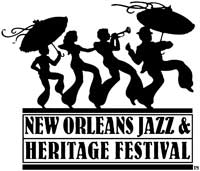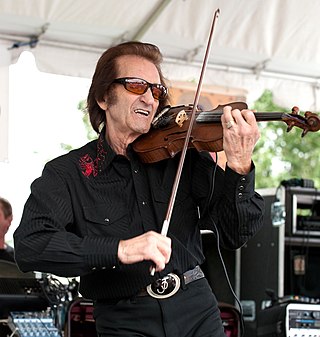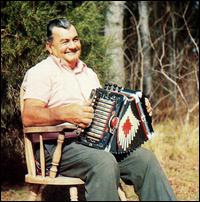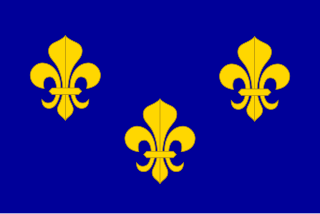
BeauSoleil is a Cajun band from Louisiana, United States.

The New Orleans Jazz & Heritage Festival is an annual celebration of local music and culture held at the Fair Grounds Race Course in New Orleans, Louisiana. Jazz Fest attracts thousands of visitors to New Orleans each year. The New Orleans Jazz & Heritage Festival and Foundation Inc., as it is officially named, was established in 1970 as a 501(c)(3) nonprofit organization (NPO). The Foundation is the original organizer of the New Orleans Jazz & Heritage Festival presented by Shell Oil Company, a corporate financial sponsor. The Foundation was established primarily to redistribute the funds generated by Jazz Fest into the local community. As an NPO, their mission further states that the Foundation "promotes, preserves, perpetuates and encourages the music, culture and heritage of communities in Louisiana through festivals, programs and other cultural, educational, civic and economic activities". The founders of the organization included pianist and promoter George Wein, producer Quint Davis and the late Allison Miner.

Douglas James Kershaw is an American fiddle player, singer and songwriter from Louisiana. Active since 1948, he began his career as part of the duo Rusty and Doug, along with his brother, Rusty Kershaw. He had an extensive solo career that included fifteen albums and singles that charted on the Hot Country Songs charts. He is also a member of the Louisiana Music Hall of Fame, being inducted in 2009.

Paul Prudhomme, also known as Gene Autry Prudhomme, was an American celebrity chef whose specialties were Creole and Cajun cuisines, which he was also credited with popularizing. He was the chef proprietor of K-Paul's Louisiana Kitchen in New Orleans, and had formerly owned and run several other restaurants. He developed several culinary products, including hot sauce and seasoning mixes, and wrote 11 cookbooks.

George Rodrigue was an American artist who in the late 1960s began painting Louisiana landscapes, followed soon after by outdoor family gatherings and southwest Louisiana 19th-century and early 20th-century genre scenes. His paintings often include moss-clad oak trees, which are common to an area of French Louisiana known as Acadiana. In the mid-1990s Rodrigue's Blue Dog paintings, based on a Cajun legend called Loup-garou, catapulted him to worldwide fame.

Clementine Hunter was a self-taught Black folk artist from the Cane River region of Louisiana, who lived and worked on Melrose Plantation.
Royal Street is a street in the French Quarter of New Orleans, Louisiana, U.S. It is one of the original streets of the city, dating from the early 18th century, and is known today for its antique shops, art galleries, and hotels.
Dr. Harry Oster was an American folklorist and musicologist.
Elemore Morgan Jr. was an American painter, photographer, and educator. He was recognized in the Southern United States as a leading contemporary landscape artist. He was a professor of art at University of Louisiana at Lafayette, from 1965 until 1998. His paintings of rice farms in Vermilion Parish have been widely exhibited, from Paris to Los Angeles.

The term Creole music is used to refer to two distinct musical traditions: art songs adapted from 19th-century vernacular music; or the vernacular traditions of Louisiana Creole people which have persisted as 20th- and 21st-century la la and zydeco in addition to influencing Cajun music.

Alexander Girard, affectionately known as Sandro, was an architect, interior designer, furniture designer, industrial designer, and a textile designer.

Nathan Abshire was an American Cajun accordion player. His time in the U.S. Army inspired Abshire to write the crooner song "Service Blues", which the newspaper Daily World reported as "one of his most memorable tearjerkers". After the war, he settled in Basile, Louisiana, where he played regularly at the Avalon Club. He released his best-known record, "Pine Grove Blues", in 1949. Abshire's music became more well known outside of Louisiana at the 1964 Newport Folk Festival. Abshire was never able to write so he was unable to sign autographs, resulting in him having to politely decline the requests. Despite thoughts of Abshire being "arrogant or stuck-up" for not signing autographs, he was unable to read and write. However, Abshire was taught how to write his own signature by Barry Jean Ancelet. Despite receiving more income from music than the majority of Cajun musicians, Abshire was not able to entirely depend on that income to live on. Abshire had multiple jobs during his life and his final job was working as the custodian of the town's dump. Abshire's legacy continued after his death in the form of a museum, a book, and a magazine special issue.
The Grammy Award for Best Zydeco or Cajun Music Album was an honor presented to recording artists at the 50th, 51st, 52nd and 53rd Annual Grammy Awards (2008–2011) for quality zydeco or cajun music albums. The Grammy Awards, an annual ceremony that was established in 1958 and originally called the Gramophone Awards, are presented by the National Academy of Recording Arts and Sciences of the United States to "honor artistic achievement, technical proficiency and overall excellence in the recording industry, without regard to album sales or chart position".
William James Toye was an art forger in Baton Rouge, Louisiana. He painted in styles copied from Paul Gauguin, Pierre-Auguste Renoir and Alfred Sisley; Toye also copied the style of Claude Monet. Toye, his wife, and Robert E. Lucky, a New Orleans art dealer, were indicted on charges of conspiracy to commit mail fraud in 2010. On June 6, 2011, Toye pleaded guilty to conspiracy to sell counterfeit Clementine Hunter paintings, to misrepresenting the authenticity and origin of the paintings, and to painting the counterfeited Hunter artwork. William and Beryl Toye pleaded guilty to mail fraud charges in 2011 and were sentenced to two-years probation and ordered to pay $426,393 in restitution to the victims of the fraud. Robert Lucky was also convicted of mail fraud in January 2012 and was sentenced to 25 months in prison.
Peter Hunt, was an American artist whose work is described as folk art or primitive art. He gained recognition for his art in the 1940s and 1950s when his decorated, refinished furniture was featured in magazines such as Life, House Beautiful, and Mademoiselle.

The cuisine of New Orleans encompasses common dishes and foods in New Orleans, Louisiana. It is perhaps the most distinctively recognized regional cuisine in the United States. Some of the dishes originated in New Orleans, while others are common and popular in the city and surrounding areas, such as the Mississippi River Delta and southern Louisiana. The cuisine of New Orleans is heavily influenced by Creole cuisine, Cajun cuisine, and soul food. Later on, due to immigration, Italian cuisine and Sicilian cuisine also has some influence on the cuisine of New Orleans. Seafood also plays a prominent part in the cuisine. Dishes invented in New Orleans include po' boy and muffuletta sandwiches, oysters Rockefeller and oysters Bienville, pompano en papillote, and bananas Foster, among others.
Richard Harvey Collin was an American historian, university professor, restaurant critic, and cookbook writer. He was notable for his research in the life and presidency of Theodore Roosevelt. Collin's contributions to Theodore Roosevelt scholarship included his dissertation, two monographs on Roosevelt, editing a book length collection of papers on the President, journal articles, and book reviews related to other writers' works on the President. His food writing, much of it written together with his wife Rima, included cookbooks and restaurant reviews.

Louisiana French is an umbrella term for the dialects and varieties of the French language spoken traditionally by French Louisianians in colonial Lower Louisiana. As of today Louisiana French is primarily used in the state of Louisiana, specifically in its southern parishes.
Upperline Restaurant, or simply Upperline, was a fine dining restaurant in New Orleans, Louisiana, United States. Opened in 1983 by restaurateur JoAnn Clevenger, the restaurant was housed in a yellow townhouse located at 1413 Upperline Street in Uptown New Orleans near the St. Charles Streetcar Line. The restaurant focused on and was celebrated for mixing Cajun, Louisiana Creole, and Southern cuisine. Though Clevenger was not a chef, she developed Upperline's signature dish of fried green tomatoes with shrimp rémoulade, and inspired many other menu items. Upperline temporarily closed in March 2020 as a result of the COVID-19 pandemic. In November 2021, Clevenger announced the restaurant would not be reopening and that she and her family planned to sell the building and possibly the business.










